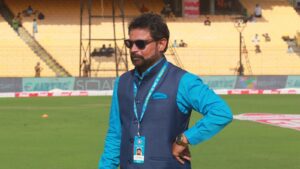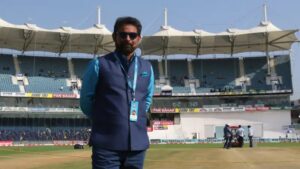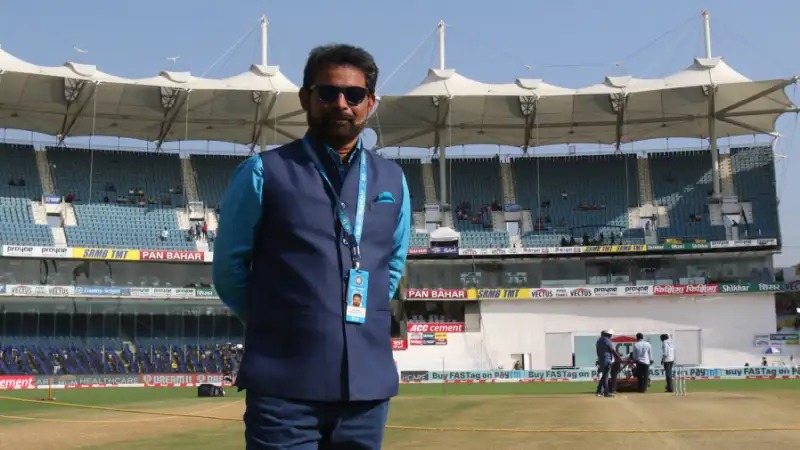
Such fiascos could be easily avoided with clear channels of communication, and selectors chosen on the basis of how well they can do the job rather than the number of caps they have.
As expected, Chetan Sharma has resigned as chairman of the selection panel for Indian’s men’s cricket team. In truth, his position was untenable from the moment the general public saw footage from the sting operation carried out by a TV channel. The questionable ethics of such a stunt have already been discussed (https://revsportz.in/big-mouth-chetan-sharma-or-complete-non-story/), but with players now aware of how he viewed certain thorny selection issues, there was no question of him being able to sit in on future meetings.
At this stage, perhaps Indian cricket needs to take a step back and reassess what makes a good selector in the first place. And there also needs to be some thought on clear and transparent communication, so that that kind of loose talk captured on hidden camera doesn’t become a cottage industry in itself.
Until the 2007 World Cup debacle in the Caribbean, India’s selectors performed honorary roles. It was not a full-time or professionally paid position. This state of affairs had caused considerable disquiet. John Wright, the coach whose partnership with Sourav Ganguly did so much to drag Indian cricket into the modern age, advocated strongly for professional selectors, arguing that it was the only way to make them accountable for their choices.
When Greg Chappell took over as coach, it was often hard to escape the feeling that some of the selectors were simply in awe of him, and the place he occupied in the game’s history. As a result, many of the comings and goings did nothing to improve the morale of a team whose performances declined alarmingly after the peaks of the Ganguly-Wright era.
But even while acceding to the need for selectors who could focus exclusively on the job in hand, the cricket board gave mixed messages. The emphasis was often on the player’s stature rather than their suitability for the task. In recent times, there was much criticism of the appointments of Jatin Paranjape (four ODI caps) and Gagan Khoda (two ODI caps). Their lack of top-flight experience was seen as evidence of their unsuitability.
It was Arrigo Sacchi, the legendary football coach whose imprint is all over every top modern team, that once said: “I never realised that to become a jockey you needed to be a horse first.” That was in response to daft questions about his lack of playing pedigree.
The two men who were the main architects of Australian cricket’s decades of dominance had undistinguished careers. Between them, Lawrie Sawle – who passed away at the age of 96 last year – and Trevor Hohns chaired the selection panel for two decades. The list of players they introduced to the side, starting with Steve Waugh in the mid-1980s, reads like a who’s who of Australian cricket.
Sawle served in Papua New Guinea as a teenager during World War II, and a first-class career that started at 29 never included any Test caps. Hohns played seven Tests in 1989. They may not have been thoroughbred players, but they had an uncanny knack of picking winners. There was a coherent selection policy, and even players who were discarded were often told what they had to do to come back into the fray. That’s essentially what great selection is about – an eye for talent and clear channels of communication.
So much of the unnecessary intrigue and innuendo surrounding team selection could be avoided with a press conference or media release after each selection meeting. The top football coaches, whether that’s Pep Guardiola or Jurgen Klopp, have to front up to the media before and after every game. Their decisions are endlessly scrutinised and they get a chance to explain them. This is equally true in most other sports as well.

What Indian cricket hopes to achieve by encouraging opacity and Chinese whispers is known only to those wise men who keep perpetuating a redundant system. If the selectors don’t want to face the cameras – surely explaining decisions is part of the process of accountability? – then a release explaining why someone was selected and another left out will do.
Can you even imagine how a player like Sanju Samson feels when he reads that his selection may or may not have been influenced by perceptions about how his fans behave on social media? Wouldn’t a Sarfaraz Khan, scoring runs for fun in domestic cricket over the past three seasons, get a massive boost if the selection panel came out and said that he was one of a clutch of players very much in their thoughts for the future?
These are simple measures, and so easy to implement. Instead of chasing after high-profile names, many of whom might be used to being in the media limelight, Indian cricket needs to prioritise selectors who go about their tasks diligently and quietly, showing their faces only when clear communication is needed. Otherwise, such fiascos, whether they’re shamelessly engineered or not, will just keep cropping up.





